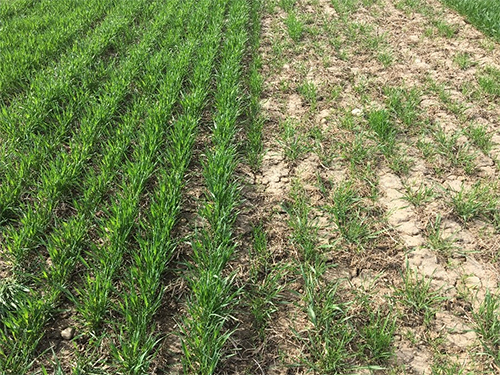Next, ensure you are using a starter fertilizer. Ontario research has shown over and over again that winter wheat is highly responsive to starter fertilizer, phosphorus in particular. Starter fertilizer provides nutrients for early growth and promotes root development, ultimately improving winter survival and crop uniformity the following spring. Seed-placed starter fertilizer has be shown to increase yields, on average, by 7.5 bushels per acre. Ontario research has also shown that dry granular fertilizers are as effective as liquid 6-24-6 (Table 1 and 2).

Consider the move to fall weed control! Although winter wheat is quite competitive, weed pressure can have an impact on tillering, ultimately reducing yields. Fall weed control enables you to better manage herbicide resistant Canada fleabane and also provides an opportunity to control perennial and winter annual weeds. More importantly it allows for proper fungicide timing in the spring and means one less thing to worry about in the busy planting season.

Figure 2. Winter wheat seeded at 1″ seeding depth (left) vs 1/2″ seeding depth (right)
Lastly, be prepared to adjust! Adjusting your seeding depths and populations will help compensate for the less than ideal conditions that may occur at planting. Seed winter wheat a depth of about 1 inch, any shallower and the crop becomes more vulnerable during the winter months (Figure 2). If the weather turns dry during planting, adjust the seeding depth so that the seed is being placed into moisture. Seeding rates should also be adjusted if seeding is delayed beyond the optimum timing. Rates should be increased by 200,000 seeds/week to a maximum of 2.2 million seeds/acre. Higher seeding rates when planting is delayed will also assist with the reduced tillering that may occur before winter.
The fall can be a busy time with soybean harvest and winter wheat planting occurring simultaneously, but when it comes to winter wheat, time is money. So if we want a profitable wheat crop we need to pay attention to the details in the fall and give it the best chance to survive whatever Mother Nature throws it’s way!
Source : fieldcropnews